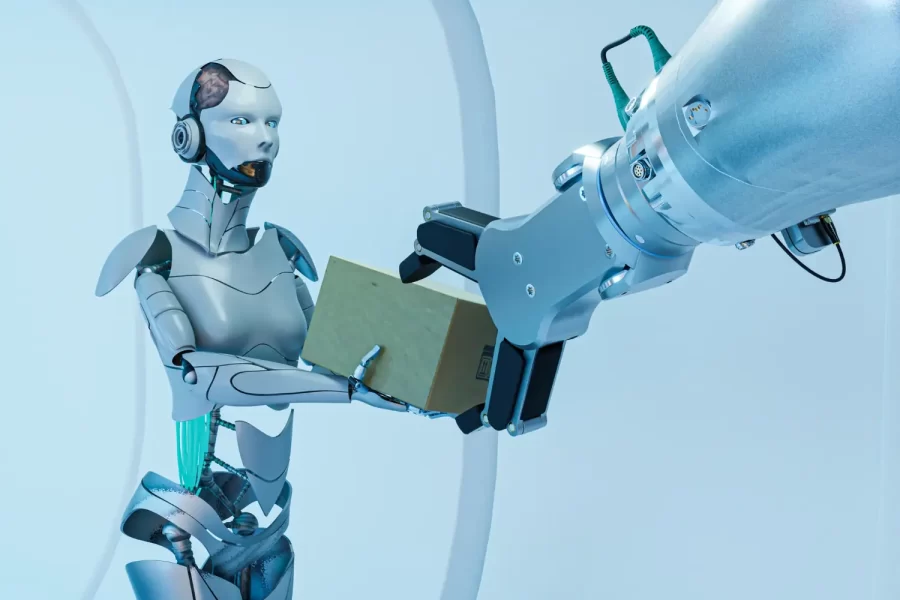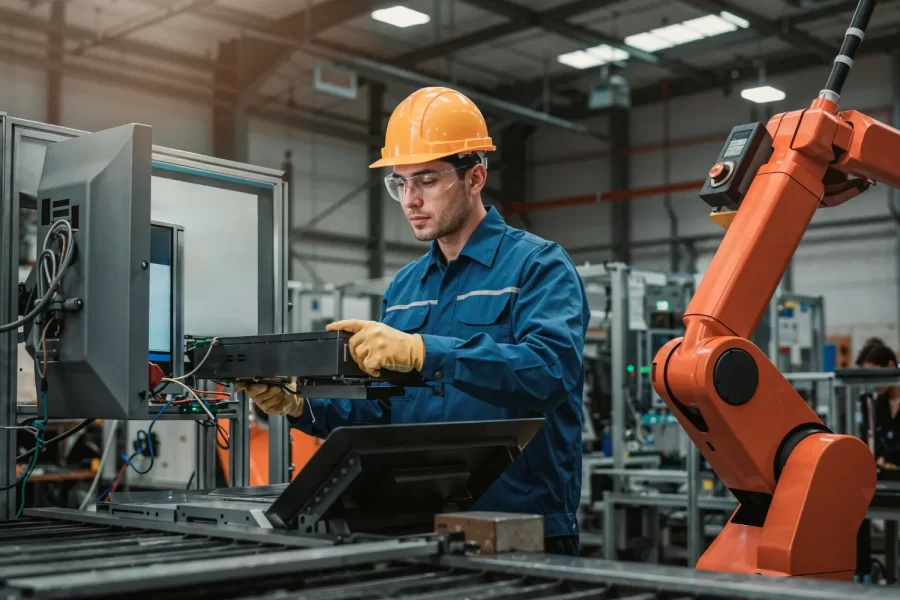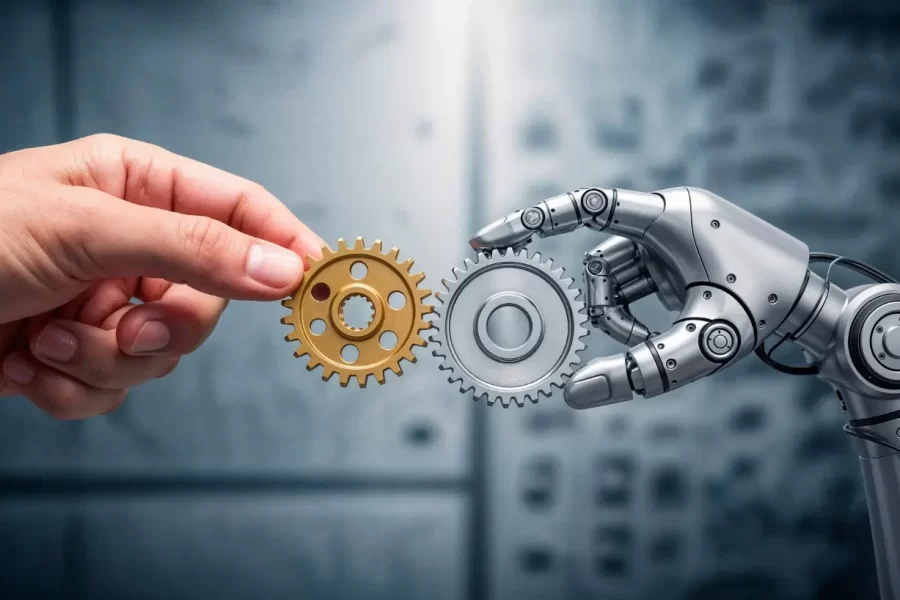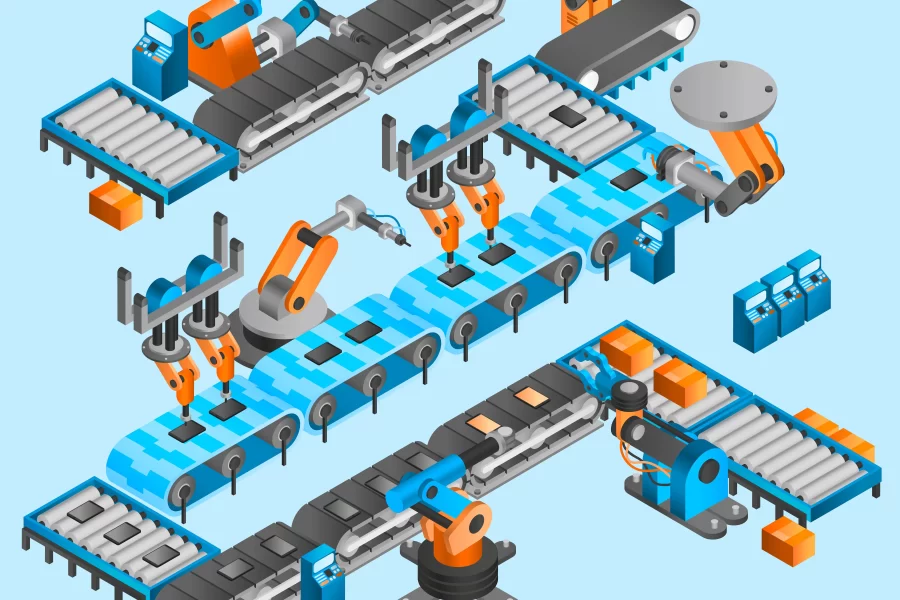
-
31 October 2025
Table of Contents The New Rule of Manufacturing in the Digital Age: Connected Production and AI Why is Feeding Operations Automation (FOA) a Critical Necessity? End-to-End Feeding Operations Automation (FOA) with Sora Robotic How to…

31 October 2025
Table of Contents The New Rule of Manufacturing in the Digital Age: Connected Production and AI Why is Feeding Operations Automation (FOA) a Critical Necessity? End-to-End Feeding Operations Automation (FOA) with Sora Robotic How to…

8 September 2025
Table of Contents How Many Types of Industrial Robots Are There? When Are Delta Robots Preferred? Which Tasks Are SCARA Robots Suitable For? What Advantages Do Articulated Robots Have? Which Robot Type is Suitable for…

8 September 2025
Table of Contents How Do Robots Reduce Production Costs? What Is the Return on Investment Period for Businesses? Are Robots Scalable? How to Gain a Competitive Advantage? When Do Investments Pay for Themselves? The winds…

20 August 2025
Table Of Contents How Does the Use of Robots Affect the Workforce? How Do Robots Improve Quality? Do They Provide a Time and Cost Advantage? How Are Human Errors Minimized? How Do Efficiency and Productivity…

12 August 2025
Table of Contents Which Sectors Benefit from Robot Technology? How Does the Automotive Industry Use Robots? What Do Robots Do in the Food Sector? What Is the Advantage of Robots in Electronics Manufacturing? How Do…

12 August 2025
Table of Contents What Does Industrial Robotics Mean? In Which Manufacturing Processes Are Robotic Systems Used? What Are the Types of Industrial Robots? How Do Industrial Robots Increase Manufacturing Efficiency? What Is the Difference Between…

21 July 2025
Table of Contents Basic Functions of MES and Robotic Systems: How Do They Work? What Are the First Steps for Manufacturing Execution System (MES) and Robotic System Integration? Is an Increase in Efficiency Possible with…

16 July 2025
Table of Contents What is a Robotic CNC Tending System and How Does It Work? Advantages of Robotic CNC Tending Systems for Uninterrupted Production Speed and Efficiency Performance of Robots in CNC Tending Systems Reducing…

11 July 2025
Table of Contents What is the Role of Robotic Grippers in CNC Feeding Systems? How to Choose the Right Robotic Grippers for CNC Machining? Flexibility of Robotic Grippers in Handling Parts of Different Shapes Time…

4 July 2025
Table of Contents What are the Advantages of Robots in Transporting Small Cosmetic Samples? Robot Technologies and Methods Used in Transporting Very Small Products How Do Precision Robots Ensure the Safety of Cosmetic Products? Methods…
Industrial automation is at the core of modern manufacturing, transforming how goods are produced, factories operate, and businesses thrive. It’s about using technology to control and monitor industrial processes, significantly reducing human intervention.
The most basic question when discussing this topic is: What defines industrial automation? Industrial automation involves the use of control systems, such as computers or robots, and information technologies for handling different processes and machinery in an industry to replace human intervention. The goal is to perform tasks automatically, efficiently, and with high precision.
So, what are the core components that enable industrial automation? A typical industrial automation system relies on several key elements working in unison:
Pondering how do automation systems improve efficiency? By automating repetitive, dangerous, or complex tasks, these systems ensure consistent quality, higher production rates, reduced errors, and optimized resource utilization, all of which contribute to significant efficiency gains.
Industrial automation has permeated nearly every segment of the manufacturing industry due to its diverse capabilities.
Here are some primary application areas where industrial automation is widely utilized:
Key sectors include automotive, aerospace, electronics, pharmaceuticals, food and beverage, chemicals, and energy, where precision, speed, and safety are paramount.
The advantages offered by industrial automation are transformative.
The landscape of industrial automation is continuously evolving, driven by advancements in digital technologies.
The future of industrial automation is deeply intertwined with several cutting-edge technologies:
These include the high initial investment, the need for a skilled workforce to manage and maintain complex systems, cybersecurity risks, and the ethical considerations surrounding job displacement.
📍 Ferhatpaşa Sb, Sümbül Sk. No:1/2 B1 Çatalca / İstanbul
📞 Telephone +90 (212) 786 61 76
📨 info@sorarobotic.com